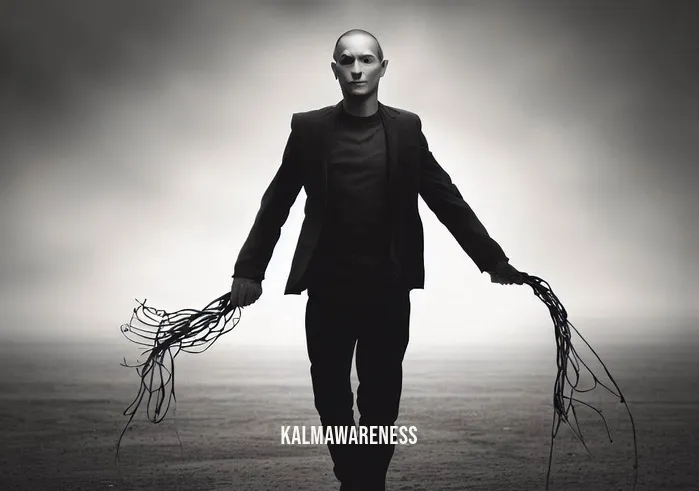Embracing the Discomfort: The Journey Through Uncomfortable Feelings
Why Do We Feel Uncomfortable?
Life is a rollercoaster of emotions, and sometimes we find ourselves sitting with feelings that are less than comfortable. Ever wondered why certain emotions make us want to run for the hills? It’s a mix of our biology, upbringing, and societal norms. Emotions like anxiety, sadness, or anger are often labeled as ‘negative’, leading us to believe we shouldn’t feel them. But here’s the catch – these feelings are as natural as joy or excitement.
Understanding Our Emotional Landscape
In our journey of sitting with uncomfortable feelings, it’s crucial to understand what these feelings are and why they arise. It’s like being a detective in your own emotional world. When we experience discomfort, it’s often a signal, much like pain is to physical injury. These signals can be pointers to something we need to address or change in our lives. For instance, anxiety might be pointing to overcommitment, or sadness might be signaling a need for self-care.
The Power of Acceptance
One of the most powerful tools in dealing with uncomfortable feelings is acceptance. This doesn’t mean resigning to misery; rather, it’s about acknowledging your feelings without judgment. It’s like saying, “I feel anxious right now, and that’s okay.” This approach is rooted in mindfulness, where you observe your feelings without getting swept away by them. There’s a wealth of resources on mindfulness and acceptance, such as mindful movement sleep and mindful hypnobirthing, which can guide you in this practice.
Building Emotional Resilience
As we get better at sitting with our uncomfortable feelings, we start to build emotional resilience. It’s like working out – the more you do it, the stronger you become. This resilience helps us face challenges with a clearer mind and less fear. Techniques such as meditation and sustainable self-care can be great allies in this journey.
Transitioning to Action
Understanding and accepting our feelings is just the first step. The next is to use this understanding to inform our actions. This might mean setting boundaries, seeking support, or simply giving yourself permission to rest. Remember, sitting with uncomfortable feelings isn’t about passivity; it’s an active process of self-awareness and growth.
As we wrap up this section, consider this: What might happen if you viewed your uncomfortable feelings not as enemies, but as messengers guiding you towards a deeper understanding of yourself? Let that thought lead you into the next part of our journey, where we’ll explore how to turn understanding into action.

Transforming Understanding into Action
Harnessing Emotional Intelligence
Building upon our journey through sitting with uncomfortable feelings, let’s dive into how we can transform our understanding into actionable steps. Emotional intelligence plays a crucial role in this process. It involves not just recognizing and accepting our feelings but also learning how to respond to them in a healthy and constructive way.
The Role of Mindfulness
Mindfulness is a key ally in developing emotional intelligence. It teaches us to observe our feelings without judgment and to respond rather than react. Engaging in practices like mindful movement sleep or rouse yoga can enhance our ability to stay present and connected with our emotions, even when they’re uncomfortable.
Strategies for Action
Once we’ve acknowledged and understood our feelings, it’s time to consider how we can respond to them. Here are some strategies:
- Mindful Reflection: Take a moment to reflect on what the feeling is trying to tell you. Is it signaling a need for change, or perhaps a boundary being crossed?
- Seeking Support: Sometimes, talking to a friend, family member, or a professional can provide a new perspective and additional coping strategies.
- Self-Care Practices: Engaging in self-care activities can be a way to nurture yourself when dealing with tough emotions. This might include physical activities, hobbies, or relaxation techniques.
Implementing Change
The next step is to implement the insights gained from our feelings into tangible changes in our lives. This might mean setting boundaries, altering our routines, or making lifestyle changes that align more closely with our emotional needs.
Table of Emotional Responses and Actions
To better understand how we can turn our feelings into actions, here’s a structured table:
| Emotion | Potential Message | Suggested Action |
|---|---|---|
| Anxiety | Overwhelm or stress | Prioritize tasks, seek relaxation |
| Sadness | Need for self-care | Engage in comforting activities |
| Frustration | Unmet expectations | Reevaluate goals and expectations |
| Disappointment | Adjustment of reality | Shift perspective, find new focus |
Moving Forward with Emotional Agility
Emotional agility is about being flexible with our thoughts and feelings. It’s about choosing how we respond to our emotions in a way that aligns with our values and goals. Developing emotional agility helps us navigate life’s ups and downs with grace and resilience.
Setting the Stage for Continuous Growth
As we near the end of this section, let’s ponder on how we can maintain this journey of growth and self-discovery. How can we ensure that sitting with uncomfortable feelings becomes a continuous process of learning and adaptation, rather than a one-time event?
In the next and final section of our exploration, we will delve into the long-term implications of embracing our emotions and how this practice can transform not just moments of discomfort, but our entire approach to life and well-being. As we prepare to delve deeper, consider this question: How might our lives change if we consistently applied the insights gained from our uncomfortable feelings?

Cultivating Long-Term Growth Through Emotional Awareness
The Lifelong Journey of Emotional Mastery
As we conclude our exploration of sitting with uncomfortable feelings, it’s important to recognize this as a continuous journey, one that evolves and deepens over time. Emotional mastery is not a destination but a path we walk every day, learning and growing as we go.
Integrating Emotional Insights into Daily Life
The real challenge, and opportunity, lies in integrating our emotional insights into our daily lives. This means recognizing patterns in our emotional responses and proactively using strategies to handle them. It’s about making conscious choices that align with our emotional well-being.
Future Applications of Emotional Understanding
In Personal Relationships
Understanding our own emotions can vastly improve our relationships. For instance, recognizing when frustration stems from uncommunicated expectations can lead to more open and honest conversations with loved ones.
In Professional Settings
In the workplace, emotional intelligence can enhance teamwork and leadership. Understanding the emotions behind conflicts or stress can lead to more effective problem-solving and a healthier work environment.
Actionable Insights for Continuous Growth
Cultivating Mindfulness
Consistent mindfulness practices, like mindful movement sleep or meditation, can keep us grounded and present, enabling us to deal with uncomfortable feelings more effectively.
Ongoing Learning
Seeking further knowledge on emotional intelligence through resources like mindful hypnobirthing or sustainable self-care can provide new perspectives and strategies for managing our emotions.
Engaging Call-to-Action for Further Exploration
To deepen your understanding and practice, explore additional resources such as books, podcasts, or courses on emotional intelligence and mindfulness. Remember, the journey of sitting with uncomfortable feelings is a personal and evolving one, full of opportunities for growth and self-discovery.
Final Summary in Bullet Points
- Emotional Acceptance: Recognizing and accepting uncomfortable feelings is the first step in emotional mastery.
- Mindful Practices: Engaging in mindfulness and meditation can help us stay present with our emotions.
- Application in Daily Life: Applying our emotional insights in personal and professional relationships can lead to more fulfilling interactions.
- Ongoing Learning: Continuously seeking knowledge on emotional intelligence can offer new strategies and perspectives.
- Future Applications: Cultivating these skills will aid in handling future emotional challenges with greater ease and understanding.
As we conclude, reflect on how the insights gained from sitting with uncomfortable feelings can transform not just moments of discomfort, but our entire approach to life. Consider how this journey can lead to a more mindful, empathetic, and resilient existence.





